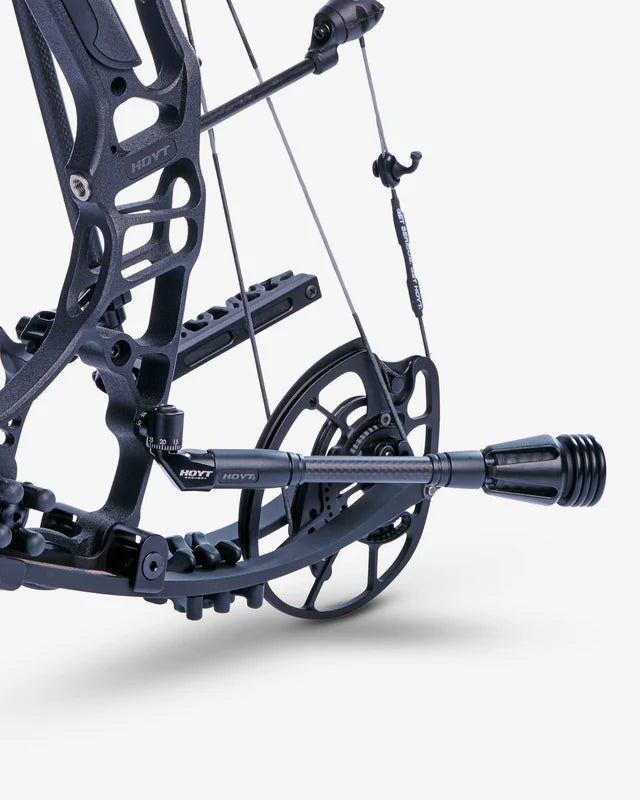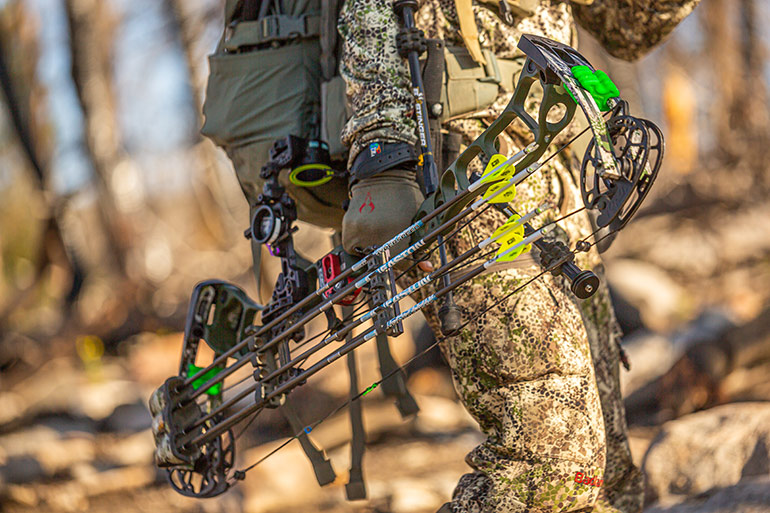The Ultimate Overview to Selecting the Right Archery Stabilizer for Improved Accuracy
Archery is a sport that requires precision and accuracy, and choosing the ideal tools is vital for accomplishing optimal outcomes. Among the different devices offered, an archery stabilizer plays a significant role in enhancing precision. Nonetheless, with many choices on the market, it can be frustrating to figure out which stabilizer is the best fit for your demands. In this thorough guide, we will check out the essential variables to consider when selecting an archery stabilizer for improved accuracy. From locating the optimum length to recognizing the different styles and materials, we will certainly look into everything you need to know to make an educated decision. Whether you are an experienced archer looking to update your equipment or a newbie looking for guidance, join us on this journey as we untangle the secrets to picking the excellent archery stabilizer.
Size: Discovering the Ideal Stabilizer Size
Figuring out the perfect stabilizer length is vital when choosing an archery stabilizer for optimal performance. The length of a stabilizer directly influences the equilibrium, stability, and accuracy of the bow. A stabilizer that is too long can make the bow feel top-heavy and difficult to manage, while a stabilizer that is too brief may not supply sufficient stability and dampening of resonances. Locating the best size requires taking into consideration aspects such as the archer's shooting style, bow weight, and individual choice.
A longer stabilizer, usually ranging from 8 to 12 inches, can give higher security and decrease bow torque. This is specifically useful for archers who shoot with a high draw weight or those who have a propensity to torque the bow throughout the shot. The included length aids to distribute the weight evenly and counterbalance any type of torque or motion.
On the other hand, a shorter stabilizer, normally in between 4 to 7 inches, offers a lot more maneuverability and quicker action. It is favored by archers that shoot with a reduced draw weight or those that call for even more wheelchair, such as seekers or 3D shooters. The much shorter length enables simpler motion through tight spaces and faster changes.
Ultimately, the optimum stabilizer size is an issue of individual choice and shooting design. It is suggested to trying out different sizes and observe the results on stability and accuracy. Consulting with skilled archers or specialists can likewise offer important understandings and recommendations.
Weight: Figuring Out the Appropriate Stabilizer Weight
After thinking about the optimal stabilizer size, the following essential element to take into consideration when choosing an archery stabilizer is figuring out the suitable stabilizer weight - archery stabilizer. The weight of the stabilizer plays a critical role in enhancing precision and stability throughout the shot
The weight of the stabilizer impacts the equilibrium and control of the bow. A heavier stabilizer can provide raised stability and control, particularly for shooters with a propensity for shaky hands or irregular shots. It aids to take in the vibrations and recoil generated by the bow, lowering torque and lessening the impact on the arrowhead's trip.
On the other hand, a lighter stabilizer allows for a quicker and more responsive bow. It can be useful for shooters that prioritize maneuverability and speed over security. Lighter stabilizers likewise decrease fatigue during lengthy shooting sessions or competitors.
To determine the ideal stabilizer weight for your requirements, it is essential to consider your capturing style, physical strength, and bow configuration. Trying out various weights and observing the influence on your shooting performance is vital to finding the excellent equilibrium.
Eventually, the optimum stabilizer weight will differ for every private archer. It is advised to begin with a moderate weight and make adjustments based upon personal choice and capturing results. Bear in mind, the objective is to achieve a stable and regulated shot, while also preserving convenience and ease of use.
Materials: Picking the Right Materials for Resilience and Efficiency
When picking an archery stabilizer, it is important to carefully consider the products utilized in its building and construction to ensure durability and enhance performance. The option of products can substantially affect the general high quality and efficiency of the stabilizer.
One of the most generally utilized products for stabilizers is carbon fiber. In addition, carbon fiber stabilizers are immune to temperature level changes and are much less likely to warp or bend over time.
Another preferred material for stabilizers is aluminum. Light weight aluminum stabilizers are recognized for their sturdiness and rigidness. They offer outstanding moistening capacities, decreasing the quantity of shock and resonance transferred to the shooter's hand. Aluminum stabilizers also supply a large range of personalization options, permitting archers to readjust the weight and size to fit their choices.
Some stabilizers are constructed making use of a mix of materials. For instance, a stabilizer might have a carbon fiber core wrapped in a light weight aluminum shell. This crossbreed style integrates the most effective high qualities of both products, offering optimal stability, sturdiness, and performance.
Style: Understanding the Different Stabilizer Styles and Their Results
Taking into consideration the products used in archery stabilizers, it is essential to now explore the various designs of stabilizers and their respective results. The style of an archery stabilizer plays a critical role in enhancing accuracy and reducing resonance during the shot. There are several different styles offered out there, each with its own distinct attributes.

One more popular design is the side bar stabilizer. This style includes affixing a brief pole to the side of the bow, alongside the main long rod. Side bar stabilizers assist in reversing the weight of accessories, such as sights or quivers, and supply added security to the bow.
Some stabilizers come with adjustable weights. These stabilizers enable archers to adjust the balance and feeling of their bows by including or getting rid of weights. This feature is particularly beneficial for archers who favor a specific weight circulation or wish to try out different configurations.
In addition, some stabilizers incorporate dampening technology to reduce resonance and noise. These stabilizers often have built-in dampeners or utilize materials that take in vibrations, resulting in a smoother and quieter shot.

Devices: Exploring Extra Accessories for Enhanced Security
To better boost security in archery, extra accessories can be made use of. These devices are designed to operate in combination with the archery stabilizer to give an even greater level of stability and accuracy. One such accessory is the V-bar or the side stabilizer mount. This accessory enables for the accessory of a second stabilizer, which aids to stabilize the bow and reduce torque. By dispersing the weight uniformly on both sides of the bow, the V-bar assists to reduce any type of undesirable movement during the shot.
An additional accessory that can improve security is a bow sling. A bow sling is a strap that affixes to the bow and allows the archer to maintain a loosened up hold on the bow deal with without the fear of dropping it (archery stabilizer). This kicked back grip assists to minimize muscular tissue tension and allows for an extra secure and consistent shot
In addition, a stabilizer weight system can be made use of to tweak the balance and stability of the bow. These weight systems normally contain tiny weights that can be included or eliminated from the stabilizer to adjust the equilibrium point try here of the bow. By locating the optimum balance factor, archers can attain a more stable and exact shot.
Verdict
To conclude, picking the right archery stabilizer involves considering variables such as length, weight, products, design, and additional devices. The ideal stabilizer length and weight will certainly depend on private preferences and shooting design. Selecting sturdy materials is necessary for durable efficiency. Recognizing the different stabilizer designs will certainly aid enhance precision. Finally, discovering added devices can further improve stability during archery capturing.
Determining the ideal stabilizer length is essential when selecting an archery stabilizer for ideal efficiency. A stabilizer that he has a good point is too long can make the bow really feel top-heavy and challenging to control, while a stabilizer that is too short may not supply adequate stability and dampening of vibrations - archery stabilizer.Taking into account the materials used in archery stabilizers, it is crucial to now dive into the different styles of stabilizers and their particular effects. Side bar stabilizers aid in reversing the weight of devices, such as quivers or views, and offer extra security to the bow
These weight systems usually are composed of tiny weights that can be included or eliminated from the stabilizer to change the balance factor of the bow.